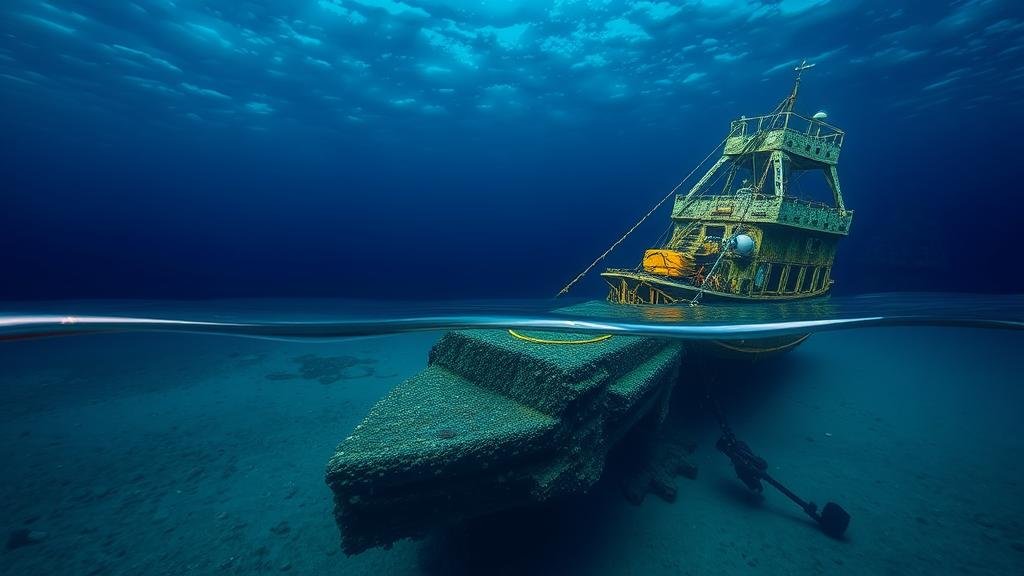How AI Analyzes Underwater Sonar Data to Locate Shipwrecks
Introduction
The quest to locate shipwrecks has driven explorers, historians, and archaeologists for centuries. With the integration of artificial intelligence (AI) into sonar technology, the efficiency and accuracy of locating these underwater relics have significantly improved. This article explores how AI analyzes underwater sonar data to locate shipwrecks, highlighting the techniques, benefits, and case studies that illustrate this innovative application of technology.
Fundamentals of Sonar Technology
Sonar, an acronym for Sound Navigation and Ranging, is a technique used to detect objects underwater by emitting sound pulses and analyzing the echoes that return. This technology is categorized mainly into two types: active and passive sonar.
- Active Sonar: Involves sending out sound waves and measuring the time it takes for echoes to return. It provides detailed images of the seafloor and submerged objects.
- Passive Sonar: Listens for sounds made by objects in the water, relying on sound detection rather than emission.
Introduction of AI in Sonar Data Analysis
The convergence of AI and sonar technology heralds a new era in underwater exploration. AI algorithms, particularly those based on machine learning, analyze vast datasets generated from sonar systems. This analysis can delineate between natural and man-made objects, enhancing the identification of historical wrecks.
Techniques Used in AI Analysis of Sonar Data
Various AI techniques are harnessed for interpreting sonar data, with the most prevalent being deep learning methods. These techniques involve training neural networks on large datasets of sonar images and features associated with known shipwrecks.
Deep Learning Models
Deep learning models utilize layered neural networks, which can automatically identify the distinguishing characteristics of shipwrecks from noise in sonar data.
- Convolutional Neural Networks (CNNs): CNNs are particularly effective for image data analysis, allowing AI systems to learn spatial hierarchies in sonar images.
- Recurrent Neural Networks (RNNs): Useful for time-series data, RNNs can track changes in sonar signals, aiding in detecting moving objects or determining the nature of a wreck over time.
Data Preprocessing and Augmentation
Prior to training, sonar data must be preprocessed. Techniques include filtering noise from raw signals, normalizing data, and augmenting datasets by simulating various underwater conditions to enhance model training.
Case Studies and Real-World Applications
Several successful applications of AI in analyzing sonar data have been documented in the field of maritime archaeology.
The USS Indianapolis
In 2017, the search for the USS Indianapolis, a World War II cruiser sunk by Japanese submarines, utilized AI algorithms to sift through sonar data collected by undersea drones. AIs ability to detect anomalies in the data led to the location of the wreck at a depth of over 18,000 feet in the Philippine Sea, illustrating the technologys effectiveness in uncovering historical wrecks.
The Titanic Research Expedition
Another noteworthy case is the use of AI during the Titanic research expeditions. Advanced sonar systems equipped with AI were employed to analyze the seabed and track debris fields, revolutionizing the ongoing studies of the wreck and promoting preservation efforts.
Challenges and Limitations
Despite its numerous advantages, AI in sonar data analysis faces several challenges.
- Quality of Data: AI algorithms require high-quality sonar data for effective training and reliable predictions. Incomplete or noisy datasets may lead to inaccurate results.
- Interpretation of Results: The interpretation of sonar images is complex and often subjective, requiring expert human oversight to validate AI findings.
Conclusion
Artificial intelligence is transforming the domain of underwater archaeology by enhancing the analysis of sonar data. Through the use of advanced machine learning techniques, researchers are better equipped to locate shipwrecks with improved accuracy and efficiency. As technology continues to evolve, the integration of AI promises to unveil even more of the secrets buried beneath the ocean’s surface.
Actionable Takeaways
Organizations involved in underwater exploration should consider the following:
- Invest in training AI models with high-quality sonar data to enhance detection rates.
- Combine AI capabilities with expert interpretation to validate findings and improve accuracy.
- Stay updated with advances in AI and sonar technology to leverage the latest methodologies and tools for underwater explorations.



